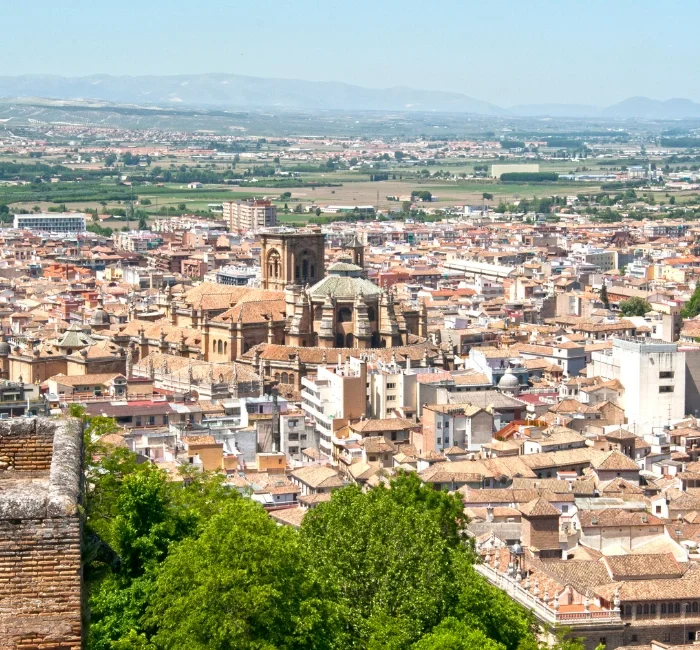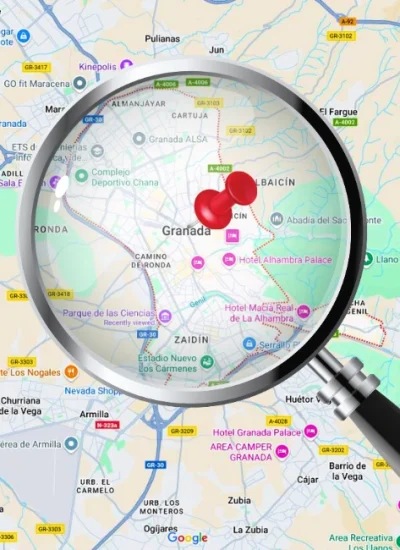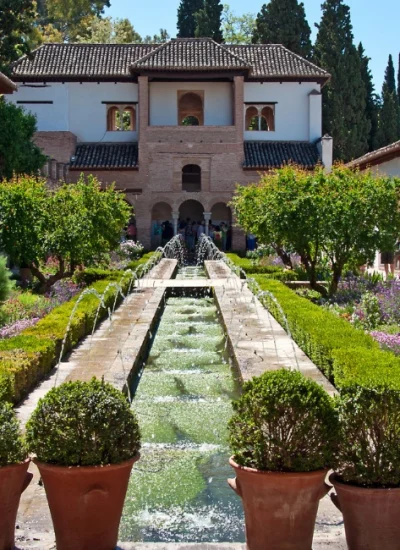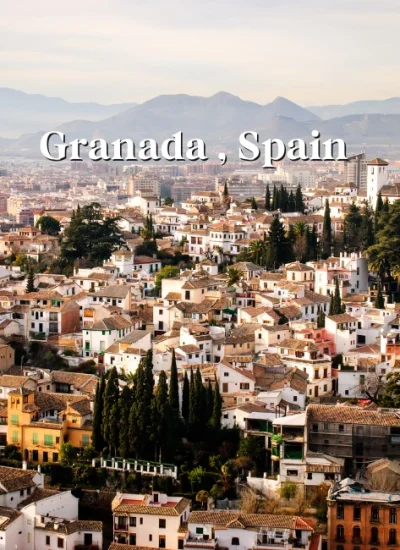When exploring things to do in Granada, Spain, you’ll discover a city rich in history and culture, nestled in the heart of Southern Spain. Granada offers a unique blend of Moorish and Renaiss ance architecture, vibrant traditions, and stunning landscapes.
This guide will take you through the city’s top attractions, historical sites, cultural experiences, and practical travel tips, ensuring you make the most of your visit to this captivating destination.
Top Attractions in Granada
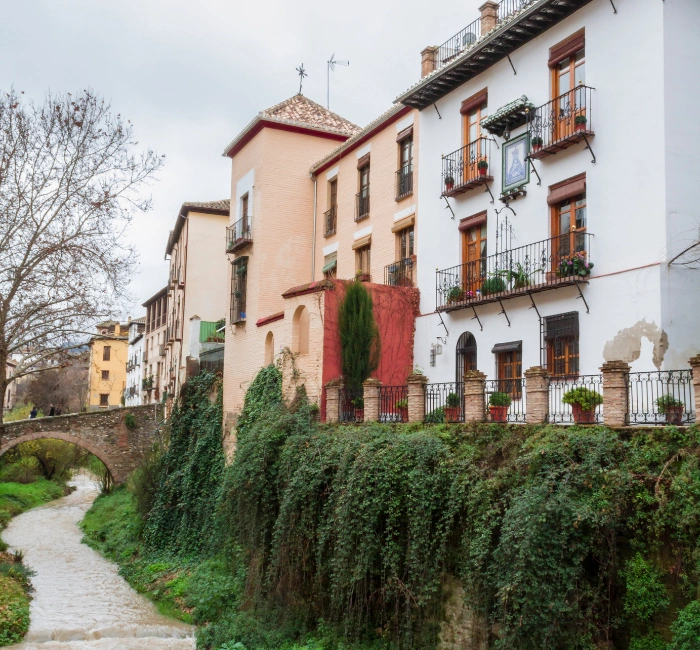
Granada is a city that effortlessly blends history, culture, and natural beauty, offering visitors an array of unforgettable experiences. From the majestic Alhambra Palace to the charming streets of the Albayzín, Granada’s top attractions are as diverse as they are captivating.
Whether you’re exploring the serene Generalife Gardens, marveling at the Renaissance grandeur of the Granada Cathedral, or soaking in the panoramic views from the Mirador de San Nicolás, each site tells a unique story of the city’s rich heritage. Stroll along the Paseo de los Tristes by the Darro River, enjoy a flamenco performance in Sacromonte, or discover hidden treasures in the Moorish Quarter. Granada’s attractions promise to leave you enchanted and eager to explore more.
Alhambra Palace and Generalife Gardens
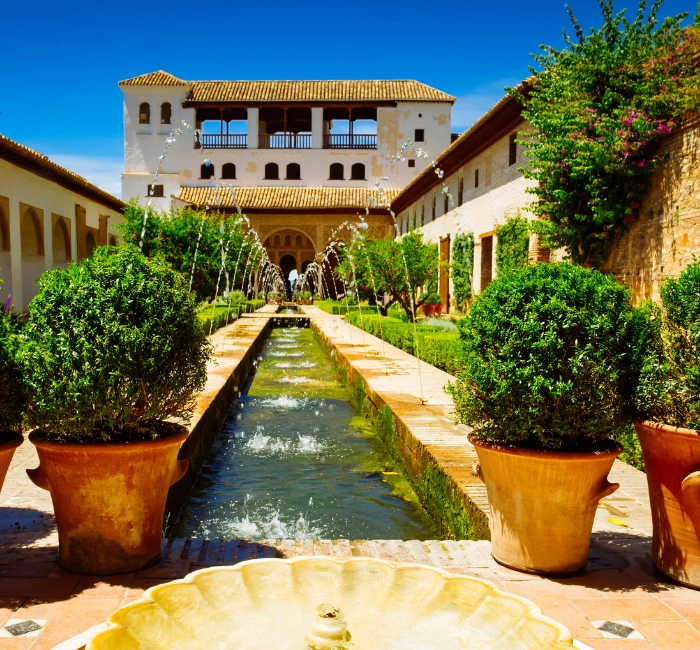
Nestled on the Sabika hill, overlooking the city of Granada, the Alhambra Palace is more than just a monument. It’s a journey through time, an architectural masterpiece that stands as a testament to the grandeur of the Nasrid dynasty. As the crown jewel of Granada, the Alhambra’s intricate palaces, serene gardens, and imposing fortifications make it one of the most significant Granada sights and a UNESCO World Heritage Site.
The Alhambra Palace is a sprawling complex that includes the Nasrid Palaces, each room more breathtaking than the last. The delicate stucco work, vibrant tiles, and the famous Moorish architecture reflect the artistry of the craftsmen who built this wonder. As you walk through the Court of the Lions, with its iconic fountain and slender columns, you can almost hear the whispers of history echoing through the halls.
The Generalife Gardens, with their perfectly manicured hedges, splashing fountains, and fragrant blooms, offer a tranquil escape from the grandeur of the palatial buildings. These gardens were once the summer palace of the Nasrid rulers, a place where they could relax, rejuvenate the human body, and enjoy the beauty of nature. Located just a few minutes from the main palaces, the Generalife’s combination of lush greenery and Moorish water features creates a sense of peace and reflection, making it a perfect counterpoint to the architectural splendor of the Alhambra.
Visiting the Alhambra is like stepping into a different world, where every detail has a story to tell. It’s no wonder that it’s considered the crown jewel of Granada and a must-visit for anyone traveling through Southern Spain. To fully appreciate this site, plan to spend several hours wandering through its palaces and gardens, and don’t forget to buy your Alhambra tickets in advance, as they often sell out quickly.
Granada Cathedral and Royal Chapel
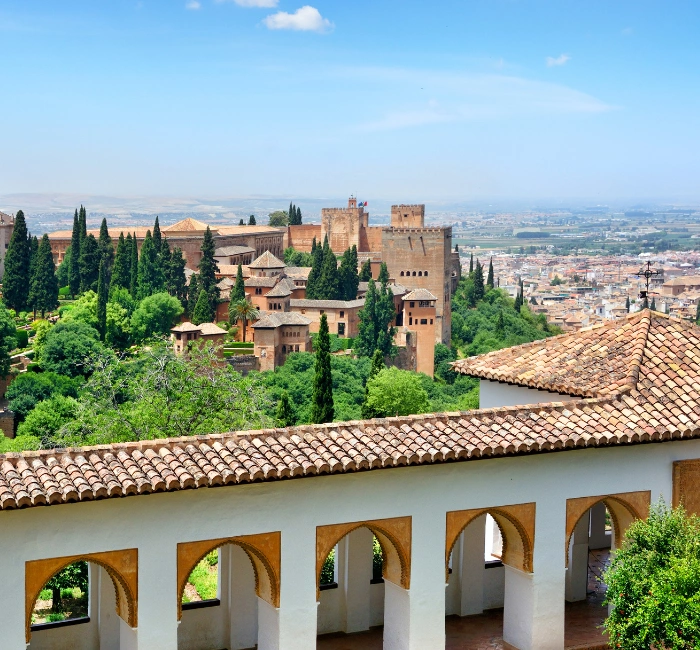
In the heart of Granada’s city center, towering above the bustling streets, stands the magnificent Granada Cathedral. This Renaissance masterpiece is not only a place of worship but also a symbol of the city’s rich history and its transition from Moorish to Catholic rule. Built on the site of a former mosque, the cathedral is a stunning example of Renaissance style, with its soaring columns, expansive chapels, and intricate facades.
As you step inside, the grandeur of the cathedral is overwhelming. The high, vaulted ceilings draw your eyes upward, where light streams through stained glass windows, illuminating the sacred space with a heavenly glow. Each chapel within the cathedral is adorned with beautiful altarpieces, statues, and artwork, all reflecting the deep religious devotion of the era.
Adjacent to the cathedral is the Royal Chapel, where the Catholic Monarchs, Queen Isabella and King Ferdinand, rest in eternal peace. This chapel is more than just a burial place; it is a monument to the unity of Spain under the Catholic monarchy. The tombs of Isabella and Ferdinand are crafted from white Carrara marble, and the chapel’s interior is richly decorated with sculptures, tapestries, and gold leaf, highlighting the wealth and power of these influential rulers.
Visiting the Royal Chapel offers a deeply moving experience, as it connects you directly to the figures who played a pivotal role in Spain’s history. The chapel is a solemn reminder of the end of an era—the Reconquista—and the dawn of a new one. For history buffs and those interested in Spain’s royal lineage, this is an unmissable stop in Granada.
Mirador de San Nicolás
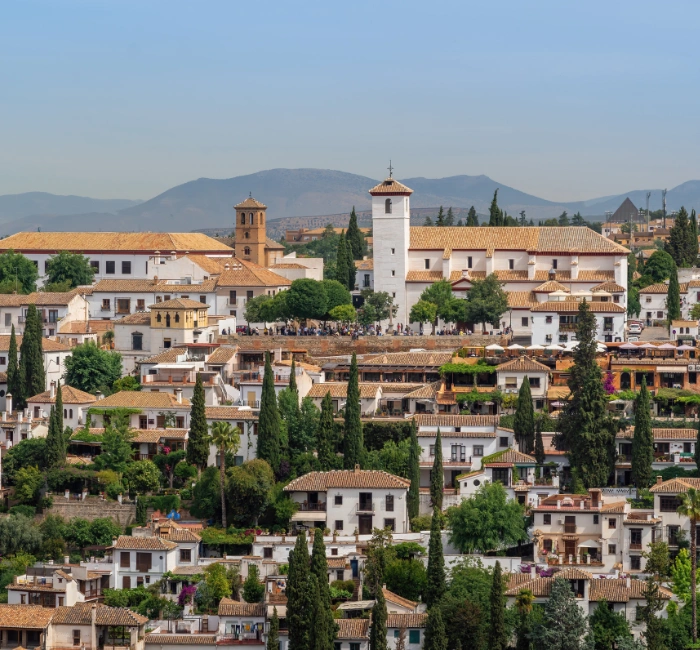
Perched high in the Albayzín district, the Mirador de San Nicolás is more than just a viewpoint—it’s a window to the soul of Granada. From this vantage point, you can gaze out over the entire city, but the real star of the show is the Alhambra Palace, set against the backdrop of the Sierra Nevada Mountains. The view from the Mirador de San Nicolás is nothing short of absolutely stunning and has been described by many as one of the most beautiful in the world.
As the sun begins to set, casting a golden hue over the Alhambra’s red walls, the scene transforms into a breathtaking display of natural and architectural beauty. It’s easy to see why this spot is a favorite for locals and tourists alike. The Mirador de San Nicolás offers more than just a panoramic view; it provides a sense of connection to the city’s past, present, and future.
The area around the mirador is filled with lively street performers, artists, and vendors, all adding to the vibrant atmosphere. Whether you visit during the early afternoon for a quieter experience or in the evening to watch the sunset, the Mirador de San Nicolás is a place that captures the essence of Granada—a city where history, culture, and natural beauty converge.
For those seeking the perfect photograph or just a moment of reflection, this viewpoint should be at the top of your list. And after soaking in the views, consider exploring the surrounding Moorish Quarter or enjoying a refreshing glass of tinto de verano at a nearby café.
Paseo de los Tristes and Carrera del Darro
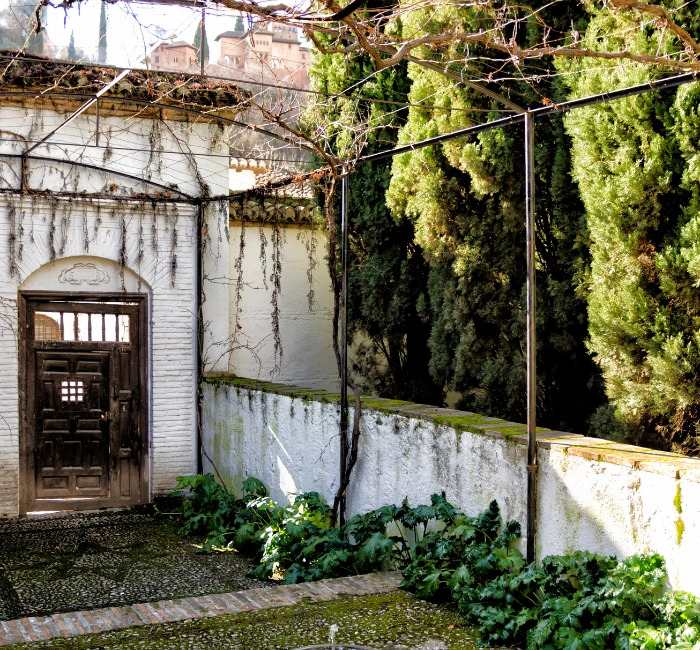
Winding along the banks of the Darro River, beneath the shadow of the Alhambra, the Paseo de los Tristes is one of Granada’s most picturesque walks. Officially known as the Paseo del Padre Manjón, this charming path is more commonly referred to as the Paseo de los Tristes, or the “Walk of the Sad Ones,” due to its historical use as the route for funeral processions heading to the cemetery.
However, there is nothing sad about this beautiful walk today. It offers stunning views of the Alhambra rising above the trees, especially in the soft light of late afternoon. The path is lined with traditional tapas bars and cafés, where you can sit and enjoy local delicacies while taking in the scenery. The sound of the Darro River flowing gently alongside adds a tranquil ambiance to the area, making it a perfect spot for a leisurely stroll.
Adjacent to this path is the Carrera del Darro, one of Granada’s oldest and most romantic streets. This cobblestone road, flanked by ancient buildings and the river, leads you through the heart of the city’s historic district. Walking along the Carrera del Darro is like stepping back in time, with the Alhambra’s towers peeking out from behind every corner and the distant sounds of flamenco music filling the air.
As you explore this area, you’ll discover hidden gems like the Arab Baths (El Bañuelo) and small artisan shops selling local crafts. The combination of history, culture, and natural beauty makes this walk a must-do for anyone visiting Granada.
Albayzín and Sacromonte
To truly grasp the essence of Granada, one must wander through the labyrinthine streets of the Albayzín and Sacromonte districts. These neighborhoods, rich in history and culture, offer a window into Granada’s Moorish past and its living traditions.
The Albayzín, or Moorish Quarter, is a UNESCO World Heritage Site and one of the oldest parts of Granada. Its winding streets are lined with whitewashed houses, flowering balconies, and small squares where locals gather. As you explore, you’ll find ancient mosques converted into churches, hidden courtyards, and stunning views of the Alhambra from unexpected angles.
Beyond the Albayzín lies Sacromonte, famous for its cave homes and deep ties to Granada’s gypsy culture. These caves have housed the city’s gypsy community for centuries and are now renowned for flamenco performances that offer an authentic glimpse into this passionate art form. The Camino del Sacromonte guides you through this area, where the Cave Museum sheds light on the history and traditions of Sacromonte’s residents.
Exploring the Albayzín and Sacromonte should be high on your list of things to do in Granada, Spain. These districts allow you to uncover the layers of history that have shaped the city and immerse yourself in the vibrant culture that still thrives today.
Discover the top sights with our Top 10 Things to Do in Granada, Spain: Explore the Best Sights and Experiences.
Cultural Experiences

Granada is not just a city of historic landmarks and breathtaking views; it’s a living, breathing embodiment of Andalusian culture. Here, every street, plaza, and venue echoes with the rhythms of flamenco, the whispers of Moorish history, and the tantalizing aromas of local cuisine. Immersing yourself in Granada’s cultural experiences is an adventure for the senses—a journey that promises to leave you enriched and inspired.
Flamenco Shows in Granada
There’s a magic that happens when the sun sets over Granada and the city’s soul comes alive in the passionate performances of flamenco shows. This art form, deeply rooted in the Andalusian spirit, is more than just music and dance. It’s an expression of emotion, history, and tradition.
In Granada, some of the most authentic flamenco performances can be found in traditional venues like Jardines de Zoraya and the caves of Sacromonte. Jardines de Zoraya, located in the historic Albayzín district, offers an intimate setting where you can enjoy dinner while being captivated by the intense rhythms of flamenco guitar, the soulful voices of the singers, and the mesmerizing footwork of the dancers. The experience here is personal, almost spiritual, as the performers channel centuries of tradition into each movement and note.
For a more rustic and raw experience, head to the caves of Sacromonte. These caves, carved into the hills, have long been home to Granada’s gypsy community, the heart of flamenco culture. Attending a flamenco show in Sacromonte is like stepping into another world. A world where the boundaries between performer and audience blur, and the power of the performance is felt deep in your soul. The Camino del Sacromonte leads you to these iconic venues, where the history and culture of flamenco come alive under the soft glow of candlelight.
Whether you’re a seasoned aficionado or a curious traveler, experiencing flamenco in Granada is a must. It’s here, in this vibrant city, that the true essence of flamenco. Its passion, its history, its soul can be felt in every strum of the guitar, every clap of the hands, and every beat of the heart.
Arab Baths (El Bañuelo)
Step back in time to the days of Moorish Granada with a visit to the Arab Baths, known locally as El Bañuelo. These baths, dating back to the 11th century, are among the oldest and best-preserved in Spain, offering a rare glimpse into the daily life and culture of the city’s Moorish inhabitants.
Located along the Carrera del Darro, El Bañuelo is a hidden gem that speaks of Granada’s rich history. As you enter, you’ll be struck by the Moorish architecture characterized by its arches, domes, and the intricate tilework that adorns the walls. The baths are divided into different rooms, each with its own purpose, from the caldarium (hot bath) to the tepidarium (warm bath) and the frigidarium (cold bath). The soft light filtering through the star-shaped openings in the ceiling adds a mystical ambiance, making it easy to imagine the serene atmosphere that once filled these spaces.
El Bañuelo wasn’t just for bathing; it was a social hub where people gathered to relax and cleanse both body and soul. Visiting these baths provides a unique cultural experience, offering a glimpse into Granada’s Moorish past and the refined lifestyle of its residents.
Today, El Bañuelo stands as a testament to Granada’s rich history, offering a tangible connection to its Moorish heritage. For history and architecture enthusiasts, or anyone seeking to explore a different side of the city, a visit to these Arab Baths is a must.
Local Cuisine and Tapas Bars
In Granada, food is more than just sustenance. It’s an experience, a celebration of life and culture. The city’s culinary scene is as diverse and rich as its history, offering visitors a chance to savor traditional Andalusian dishes in its many tapas bars and restaurants.
One of the most delightful aspects of dining in Granada is the tradition of serving free tapas with every drink ordered. This means that with each glass of wine or tinto de verano. A refreshing mix of red wine and soda. you’ll be treated to a variety of small, flavorful dishes, from churros con chocolate to jamón ibérico, marinated olives, and more. The tapas culture here is lively and social, with locals and tourists alike hopping from bar to bar, sampling the best the city has to offer.
For a truly authentic experience, head to the bustling Calle Elvira, where you’ll find some of the best tapas bars in the city. Here, you can indulge in dishes like patatas bravas (spicy potatoes), bacalao (salted cod), and the ever-popular tortilla española (Spanish omelet). Each bite tells a story of the region’s culinary heritage, influenced by centuries of Moorish, Jewish, and Christian traditions.
But Granada’s cuisine isn’t just about tapas. The city is also known for its hearty stews, grilled meats, and fresh seafood. For those with a sweet tooth, desserts like piononos. A local pastry soaked in syrup and topped with cream are a must-try.
Whether you’re enjoying a leisurely meal in one of the city’s charming plazas or grabbing a quick bite in a hidden alleyway, the food in Granada is sure to be a highlight of your visit. It’s a culinary journey that offers not just a taste of Andalusia but a deeper understanding of the culture and traditions that make this region so special.
Outdoor Activities and Nature
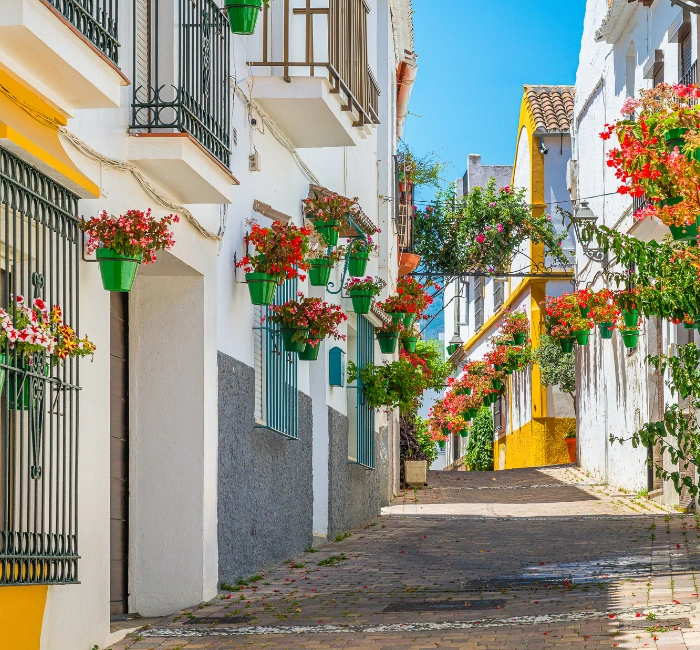
Granada is a city where history and culture thrive, but beyond its ancient streets lies a world of natural beauty waiting to be explored. From the towering peaks of the Sierra Nevada Mountains to the tranquil green spaces within the city, Granada offers a wealth of outdoor activities that connect you with nature and inspire adventure.
Sierra Nevada National Park
If you’re looking to escape the city and immerse yourself in the rugged beauty of nature, a day trip to the Sierra Nevada National Park is a must. Just a short drive from Granada, this mountain range is home to the highest peaks in mainland Spain, offering outdoor activities year-round for all adventurers.
In winter, the Sierra Nevada Mountains become a snowy paradise, ideal for skiing and snowboarding. The Sierra Nevada Ski Resort is a top destination for winter sports enthusiasts, with slopes catering to all skill levels and breathtaking views that make every run memorable.
As the snow melts, the park transforms, with lush greenery, wildflowers, and clear streams making it a haven for hiking and nature walks. The park’s trails range from easy strolls to challenging hikes, like the trek to Mulhacén, Spain’s tallest peak. Along the way, you might spot mountain goats or golden eagles and discover hidden gems like glacial lakes and ancient forests.
One of the most rewarding hikes is the Vereda de la Estrella, winding through dense forests with spectacular views of snow-capped peaks. This trail offers a quieter experience, allowing you to connect deeply with the landscape.
For a more leisurely experience, explore the Alpujarras region on the southern slopes. Here, charming villages surrounded by terraced farmlands offer a peaceful retreat. Stroll through traditional whitewashed houses, sample local delicacies, and soak in panoramic mountain views.
Whether you’re seeking adventure or solitude, the Sierra Nevada National Park is a place where the natural beauty of Southern Spain shines, making it a top choice among things to do in Granada, Spain. Every visit here feels like a journey of discovery.
Parks and Gardens
Granada isn’t just about grand monuments and historic landmarks. It’s also a city blessed with serene green spaces that offer a peaceful retreat from the hustle and bustle. These parks and gardens provide the perfect setting for relaxation, allowing you to experience a more tranquil side of the city.
A standout among these green spaces is the Science Park (Parque de las Ciencias), located just outside the city center. This sprawling park, which doubles as an interactive science museum, is a favorite for families and those curious about the natural world. The lush gardens within the Science Park are ideal for a leisurely stroll, with beautiful courtyards and thematic zones that showcase the region’s diverse flora.
For a more traditional garden experience, head to the Carmen de los Mártires, a historic garden perched on the slopes of the Alhambra. This beautiful courtyard garden, with its intricate fountains, shaded pathways, and stunning city views, offers a tranquil escape where you can unwind. The small palace within the garden adds a touch of historical charm, making your visit even more memorable.
Another must-visit is the Jardines del Triunfo, located near the city center. This expansive park is a popular spot for locals to relax, jog, or enjoy a picnic. Its wide avenues, lined with palm trees, fountains, and vibrant flowerbeds, provide a glimpse into the everyday life of Granada’s residents.
Don’t miss the Huerta de San Vicente, the summer home of poet Federico García Lorca. Open to the public, the house and gardens offer a glimpse into Lorca’s life and provide a peaceful, nature-filled retreat.
Exploring Granada’s parks and gardens is a great way to enjoy the city’s natural beauty. Whether you’re seeking a quiet spot, a picnic area, or a leisurely walk, these green spaces provide a refreshing escape from the city’s historical and cultural sites.
Historical and Religious Sites
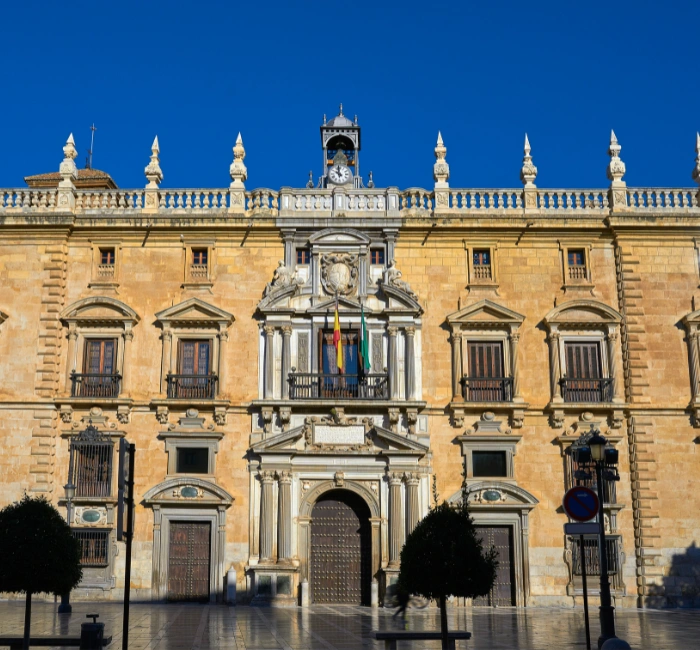
Granada is a city where history is woven into the very fabric of everyday life, and nowhere is this more apparent than in its historical and religious sites. From grand plazas to serene monasteries, these landmarks offer a window into the city’s rich past and its deep spiritual roots. Exploring these sites is like stepping back in time, each with its own story to tell, echoing with the footsteps of those who came before.
Royal Chancellery and Plaza Nueva
At the heart of Granada’s Historical Center lies the Royal Chancellery (Real Chancillería), a grand building that has stood as a symbol of judicial power since the 16th century. This Renaissance structure, with its imposing facade and intricate details, reflects the authority it once held as the seat of the highest court in the Kingdom of Granada. The Royal Chancellery is more than just an architectural marvel; it’s a testament to the city’s importance during the reign of the Catholic Monarchs, Queen Isabella and King Ferdinand.
As you approach the chancellery, you’ll be struck by the grandeur of its design, featuring classical columns, elaborate carvings, and a majestic entrance that invites you to delve into Granada’s judicial history. Inside, the building now houses the High Court of Andalusia, but its historical significance is still palpable, making it a fascinating stop for history enthusiasts.
Just a stone’s throw away is Plaza Nueva, one of the oldest and most vibrant squares in Granada. Despite its name, which means “New Square,” Plaza Nueva has been the city’s central hub for centuries. Surrounded by historic buildings and offering a stunning view of the Alhambra, the plaza is the perfect place to soak in the city’s atmosphere. Whether you’re sipping coffee at one of the many outdoor cafés or simply people-watching, Plaza Nueva is a great starting point for exploring Granada’s historical center.
The Royal Chancellery and Plaza Nueva together encapsulate the essence of Granada, where history and modern life converge in a beautiful, timeless setting. As you wander through these sites, you’ll feel the echoes of the past blending seamlessly with the vibrant energy of the present.
San Jerónimo Monastery and San Juan de Dios Basilica
For those interested in exploring the quieter, less-trodden paths of Granada, the San Jerónimo Monastery and San Juan de Dios Basilica provide a deep dive into the city’s spiritual and architectural heritage.
The San Jerónimo Monastery, a hidden gem in Granada, is a stunning example of Renaissance style. Founded in the 16th century, its grand cloisters, richly decorated interiors, and breathtaking altarpieces transport visitors to a time of deep religious devotion. The main chapel, with its gilded altar and intricate frescoes, is particularly awe-inspiring. The serene cloister gardens offer a peaceful retreat, perfect for quiet contemplation away from the bustling city streets.
Just a short walk away, the San Juan de Dios Basilica reveals the opulent beauty of baroque architecture. Dedicated to St. John of God, the basilica’s interior is a dazzling display of gold leaf, intricate carvings, and elaborate paintings. The tomb of St. John of God, located within the basilica, adds a layer of historical significance, honoring his legacy of charity and care.
Exploring these two sites is like uncovering hidden treasures, offering a rich tapestry of history, art, and spirituality. They are essential stops for anyone looking to delve deeper into the things to do in Granada, Spain.
Travel Tips

Granada is a city that invites exploration, with its winding streets, stunning architecture, and vibrant culture. To make the most of your visit, it’s important to have a few practical tips up your sleeve. Whether you’re looking for the best places to stay, the easiest ways to get around, or the ideal time to visit, these travel tips will help you plan your trip with ease and confidence.
Best Hotels and Accommodations
When it comes to finding the perfect place to stay in Granada, the options are as diverse as the city itself. Whether you’re seeking luxury accommodations with views of the Alhambra or a cozy boutique hotel in the city center, Granada has something for every traveler. And with so many things to do in Granada, Spain, your choice of accommodation will be the ideal starting point for exploring all that this vibrant city has to offer.
For those looking to immerse themselves in history, consider staying at one of the hotels near Plaza de San Nicolás. This area offers stunning views of the Alhambra and is just a short walk from the vibrant neighborhoods of Albayzín and Sacromonte. Staying near Plaza de San Nicolás also puts you close to one of the best viewpoints in the city, making it a perfect spot to begin or end your day of exploring. Luxury seekers will find the Parador de Granada to be an exceptional choice. A former convent within the Alhambra complex, offering a unique blend of historical charm and modern comforts.
If you’re traveling on a budget, Granada has plenty of affordable options that don’t skimp on quality. The Hotel Casa 1800 Granada, located in the heart of the Albayzín, offers beautiful rooms with traditional Andalusian décor and easy access to the city’s top attractions. For a more modern experience, Room Mate Leo is a stylish boutique hotel that provides comfort and convenience without breaking the bank.
No matter where you choose to stay, you’ll find that Granada’s accommodations are designed to enhance your experience of the city, offering the perfect base for your adventures.
Find the best accommodation options with our Best Hotels in Granada, Spain: Where to Stay for Comfort and Style.
Getting Around Granada
Navigating Granada is relatively easy, thanks to its compact size and well-connected public transport system. The city’s layout, with its city center at the heart and neighborhoods like Albayzín and Realejo radiating outward, makes it easy to explore on foot. Walking is, in fact, one of the best ways to discover Granada’s hidden corners, from its winding streets to its vibrant plazas, including the iconic Plaza de San Nicolás.
For those who prefer not to walk, Granada’s public transport options include buses and taxis, both of which are affordable and efficient. The city’s bus network is extensive, with routes that cover all major attractions, including the Alhambra, the Cathedral, and the Science Park. Buses are a great option if you’re traveling with a group or want to save time between sites.
Taxis are plentiful and can be hailed on the street or booked through apps. They’re a convenient option for short trips or if you’re carrying luggage. Keep in mind that some areas, especially in the Albayzín near Plaza de San Nicolás, have narrow streets that are inaccessible by car, so walking may be your best bet in these neighborhoods.
For a more scenic experience, consider taking a guided walking tour. These tours often cover the historical center, including Plaza Nueva and the Royal Chancellery, and offer insights into Granada’s rich history and culture.
Renting a car is another option if you plan to explore the surrounding areas, such as the Sierra Nevada Mountains or the Alpujarras. However, driving in Granada’s city center can be challenging due to its narrow streets and limited parking, so it’s best reserved for day trips outside the city.
Navigate the city easily with our Granada Spain Travel Map: Navigate the City’s Top Landmarks.
Best Time to Visit Granada
Granada’s appeal changes with the seasons, making it a destination that offers something special no matter when you visit. However, timing your trip to coincide with your interests and preferences can enhance your experience.
Late fall (October to November) is one of the best times to visit Granada. The summer crowds have thinned, the weather is cooler and more comfortable, and the autumn colors add a picturesque backdrop to the city’s already stunning landscapes. This is also a great time to explore the Alhambra without the intense heat of summer, allowing you to fully appreciate the beauty of its gardens and palaces.
Spring (March to May) is another ideal season to visit, with mild temperatures and blooming flowers bringing the city’s parks and gardens to life. The city hosts several festivals during this time, including Semana Santa (Holy Week), which offers a fascinating glimpse into Andalusian culture and religious traditions.
If you’re a winter sports enthusiast, consider visiting in early winter to take advantage of the nearby Sierra Nevada Ski Resort. The crisp mountain air and snow-covered peaks provide a perfect contrast to the city’s warmer climate, making it possible to ski in the morning and explore the Alhambra in the afternoon.
Summer, while hot, is still a popular time to visit, especially for those interested in Granada’s vibrant nightlife and cultural events. Just be prepared for higher temperatures and larger crowds, particularly at major tourist sites.
Whenever you choose to visit, Granada offers a wealth of experiences that are sure to leave you enchanted. Each season brings its own unique charm, making it a city worth visiting time and time again.
Plan the perfect visit with our 3 Day Travel Itinerary for Granada, Spain: Must-See Attractions and Hidden Gems.
Conclusion
Granada, Spain, is a treasure trove of history, culture, and natural beauty, offering unforgettable experiences from exploring the majestic Alhambra to wandering the charming streets of Albayzín and Sacromonte. Whether you’re drawn to its rich architectural heritage, vibrant cultural scenes, or breathtaking landscapes, Granada has something for every traveler.
To dive deeper into specific attractions and experiences, explore our detailed guides linked below. Don’t forget to subscribe for updates and share your experiences with us!
